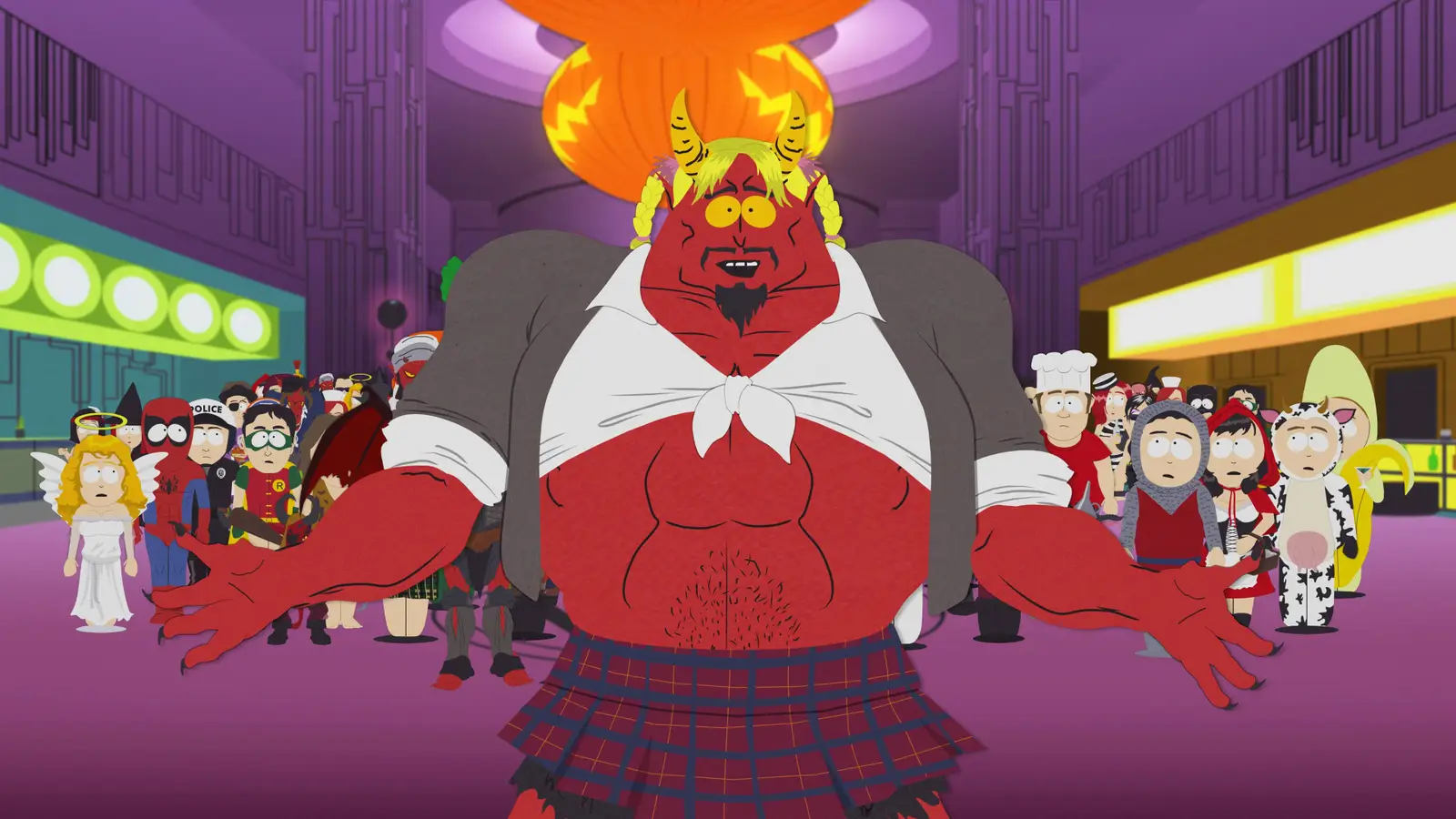Copyright Screen Rant

Halloween has always brought out South Park’s best instincts. The show’s mix of horror parody, moral panic, and small-town absurdity fits the holiday perfectly, revealing its sharp satire found in all of South Park's most rewatchable episodes. What’s impressive is how consistent South Park’s Halloween tradition has been, even as the world around it changed. If anything, my only complaint is that we only have 12 episodes to discuss across nearly three decades of South Park. Most of these episodes used Halloween as an excuse for sharper cultural commentary, but each one revealed a different side of how Matt Stone and Trey Parker see fear and humor as two sides of the same coin. Dead Celebrities Season 13, Episode 8 In "Dead Celebrities," the ghosts of recently deceased stars haunt Ike like the afterimage of fame itself. The jokes about Michael Jackson return from one of South Park's most surprisingly sweet episodes, “The Jeffersons,” but the humor isn’t quite as sharp the second time around. Once the show stops aiming at media obsession and starts punching the subjects it’s parodying, it feels more mean-spirited. But South Park’s cultural critique of our unhealthy relationship with celebrities, living and dead, is still spot on. The ghosts won’t leave because the culture that made them famous won’t let them rest, and the town’s indifference remains the mirror reflecting directly at us. Night of the Living Homeless Season 11, Episode 7 The town’s hysteria plays out like a horror movie inspired by Night of the Living Dead, complete with boarded windows and mob scenes, but the humor falters once the parody starts punching down. The homeless characters become props in the spectacle rather than participants in it. Like "Dead Celebrities," this episode technically isn't a Halloween special, but the framing still works because it captures how fear turns ordinary people cruel. The exaggerated panic becomes a portrait of how selfish the town has grown and how easily its residents turn survival into performance. South Park may be crude, but it’s never careless. Tegridy Farms Halloween Special Season 23, Episode 5 "Tegridy Farms Halloween Special" shows how long a single South Park joke can run, and sometimes it's way too long. Randy’s self-righteous obsession with his weed business still offers plenty of laughs, especially when he fails to notice the irony of calling his daughter’s distaste for marijuana a “weed problem.” But by this point, the Tegridy Farms storyline is played out, its legacy damaged..What makes the episode work, at least in flashes, is how completely Randy embodies denial in classic Randy fashion. The show’s awareness of his obliviousness will always be funny, even if the premise has worn out its welcome. Goth Kids 3: Dawn of the Posers Season 17, Episode 4 "Goth Kids 3: Dawn of the Posers" tries to satirize goth and emo subculture, and some of that mockery lands, but the episode misses a deeper opportunity. Henrietta’s time at the Troubled Acres camp could have been a full-scale takedown of the “troubled teen” industry — a topic South Park brushed past but never explored. There’s still fun in its exaggerated ribbing of goth culture, yet it’s an episode that hints at something larger and more relevant than it delivers. Watching it now, the surface-level parody feels dated, a rare cultural disease that South Park missed, but the spark of what it could have been still lingers. The Woman in the Hat Season 28, Episode 2 South Park’s newest Halloween special unfortunately feels like a last-minute Halloween trick. The Marsh family’s move into Grandpa’s retirement home sets up the argument that "South Park Sucks Now," a funny meta commentary that directly trolls the South Park fans. Meanwhile, the haunted-White-House storyline, with Satan pregnant and Melania standing ghostlike in the corner, doesn't offer enough to feel truly festive. The problem falls down to a lack of narrative focus. The show juggles crypto satire, Trump jokes, and meta commentary about its own decline, yet none of it really connects. The Trump gags still hit, and the “rectalplasm” reveal is pure gross-out humor, but the episode never settles on what it wants to be. It’s clever in moments, but it would have been stronger had the town shared a Halloween plot, and the audience trolling pushed to its own future episode. Sons a Witches Season 21, Episode 6 "Sons a Witches" leans into chaos and lands somewhere between absurd and biting. Randy and his friends getting high and disappearing for a weekend captures the show’s best version of adult stupidity, while Cartman’s attempts to escape his relationship takes his abuse to even more shocking extremes. At the time, the Harvey Weinstein scandal had just started coming to light, and South Park’s take on unchecked privilege and bad behavior disguised as bonding felt sharper than ever. It was outrageous and uncomfortable, but that tension made the humor land harder. The Scoots Season 22, Episode 5 "The Scoots" isn’t the funniest South Park Halloween episode, but it’s one of the most observant. The e-scooter craze was an easy target, yet the show found something more interesting: the way technology flattens every experience, even childhood. Kenny’s inability to join his friends trick-or-treating because he doesn’t own a smartphone is the perfect example. Halloween has always been about freedom, and here, that freedom has been replaced by connectivity and rejecting those who aren't plugged in. The social commentary outlasts the pop-culture reference, which isn’t something you can say for most modern comedy. Spookyfish Season 2, Episode 15 "Spookyfish" doubles down on the absurdity of South Park’s early years, mixing horror parody with random brilliance. The “Spooky Vision” gag — complete with framed pictures of Barbra Streisand — was advertised before the episode even aired, and it remains one of the show’s strangest running jokes. The plot, a blend of Pet Sematary and Star Trek’s mirror universe trope, was one of South Park's best horror movie parodies, giving us both an evil and a kind Cartman, an idea that shouldn’t work but absolutely does. It’s a reminder of when South Park didn’t overthink itself; it just went weird and reveled in it. Pinkeye Season 1, Episode 7 "Pinkeye," the first Halloween special, remains one of South Park's must-see episodes from seasons 1 to 5. The boys’ zombie adventure set the tone for the show’s early formula: low-stakes panic, escalating absurdity, and Cartman taking offensiveness to new heights. His Hitler costume, and Principal Victoria’s misguided attempt to fix it by dressing him as a Klan member, showed how the adults in South Park were no wiser than the kids. Kenny’s death escalating into a zombie outbreak, plus the early jokes about Cartman’s mother, turned nonsense into something strangely cohesive. The episode is dated, rough, and often ridiculous, but it remains a perfect snapshot of what South Park was in its purest form: fearless and funny in equal measure. Korn’s Groovy Pirate Ghost Mystery Season 3, Episode 10 Two seasons later, "Korn’s Groovy Pirate Ghost Mystery" refined "Pinkeye" into an even better seasonal episode. Bringing in the nu-metal band Korn (on of South Park's many celebrity guest stars) to parody Scooby-Doo works better than it has any right to, and the show’s send-up of middle-class moral panic — blaming any form of rock music for everything “Satanic” — hits exactly the right note.



